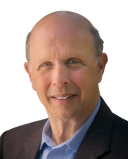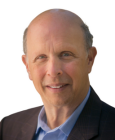Cognition
The Fallacy of Muscle Strength Testing
A clinician can inadvertently affect the results of applied kinesiology.
Posted August 5, 2024 Reviewed by Kaja Perina
Key points
- Muscle testing is an unreliable tool for evaluation of a patient’s health.
- Patients should not follow medical advice that has been given based on applied kinesiology.
- Muscle testing can be used to promote the therapeutic value of positive self-talk.
When I was trained as an American physician, I was never exposed to the concept of muscle strength testing that is utilized as part of the pseudo-scientific field of applied kinesiology (AK). To be clear, many studies have demonstrated that AK has no diagnostic value (Kenney et al., 1998, Bernstein et al., 2008, Schwartz et al., 2014).
This blog reviews how I encountered the concept of muscle testing in the middle of my career, adapted it as a tool to introduce the power of positive self-talk in my counseling practice, and learned from personal experience about why it is completely unreliable as a diagnostic tool.
Eighteen years ago, I came across a book, “Your Body Doesn’t Lie: Unlock the Power of Your Natural Energy!” by Dr. John Diamond (1979), which described how arm muscle strength testing can be used as a diagnostic tool.

This method involves asking a person to extend their arm away from the body, parallel to the floor. The person is then instructed to resist having their arm pushed down by a clinician. Dr. Diamond claimed that arm strength is affected adversely by exposures, such as to refined sugar or other unhealthy foods, and even certain images. Dr. Diamond stated that following such exposures a person’s arm weakens, and they can no longer resist having their arm pushed down.
As an example, Dr. Diamond said that if subjects look at a portrait painting of Juan de Pareja (which was reproduced in the book) they become weak, while if they look at another reproduced painting of de Pareja drawn by a different artist they remain strong.
I found these claims to be unbelievable, but when I showed many patients these paintings from the book without telling them what to expect, they all reacted the same way: The first one weakened them, while the second one allowed them to remain strong.
I was intrigued by this effect and started further researching muscle testing. I learned that such an approach spawned the field of AK, which has been practiced by many chiropractors, alternative medicine practitioners, and even some physicians (Schwartz et al, 2014).
Advocates of AK claim that it can be used to diagnose whether a particular food, vitamin, or other substance is of benefit or harmful to a patient, by asking the patient to hold a sample of the item in question, and then checking if their muscles remain strong (which purportedly means the substance is helpful) or become weak (which means the substance is harmful.) In fact, many of my patients, who have been evaluated by AK practitioners, have eliminated foods from their diets based on muscle strength testing.
Experimenting with Muscle Testing
I set about to figure out how this effect could be used in my counseling practice. With some experimentation I found that when a patient says “I’m weak” their arm strength weakens, and when they say “I’m strong” they are strengthened. One of my patients wondered what would happen if he said, “I’m not weak.” We were both surprised that his arm weakened. That’s when I learned that the mind appears to focus on the word “weak” regardless of the “not” in front of it.
I began showing my patients how this effect works and emphasized that this demonstrates that self-talk can affect how their mind and body responds. To this day, I use this method to teach patients about the importance of positive self-talk. For instance, rather than saying, “I feel anxious,” when thinking about an upcoming test, a patient might say, “I want to feel more confident,” which helps some patients become calmer.
I continued to explore how patients respond to different exposures such as photographs of different paintings, politicians or historic scenes. The patients always responded in the same way. Certain photographs appeared to weaken all of them while others strengthened all of them.
As I am a scientist physician, I began testing various permutations of this effect. One day, I had a medical student stand behind me while I performed arm strength testing of a patient in front of me. I asked the student to show the patient various photographs that consistently made patients weak or strong, but I did not know what photographs were being shown to the patient. Immediately, the effect disappeared. The patient’s arm appeared to be strong or weak randomly, and no longer responded in the same way to any particular photograph.
Belief Affects Muscle Testing
This is how I learned that the therapist’s belief can affect a patient’s response! It turned out that if I believe that a certain photograph will weaken a patient, I somehow communicate this to the patient, and the patient responds accordingly. I tested this hypothesis by performing arm strength testing while thinking “strong” or “weak” and noted that as long as the patient kept their mind clear that their body responded according to what I was thinking.
To this day I do not know if patients respond to my thoughts because I somehow communicate what I expect to occur through the nature of the pressure I exert on their arms, or through some other non-verbal means such as facial expression, posture, or direct effect of thoughts (akin to the power of prayer, if one believes in that.)
That being said, my demonstration of the power of positive self-talk retains some validity, even if I do influence my patients by my expectation that the patient will weaken when they say “I’m weak” and strengthen when they say “I’m strong.” This can be shown when I ask a patient to think to themselves that they are weak or strong, and their body responds accordingly when I push on their arms, even when I do not know what they are thinking.
Is it essential to emphasize that my effect on the patient’s response occurred both when I was aware and unaware of the influence of my belief. This is how I learned that in the practice of AK patient responses are likely to reflect the belief of the practitioner, rather than any intrinsic reaction of the patients. It is for this reason that AK must not be used for diagnosis.
Takeaway
Muscle testing is an unreliable tool for evaluation of a patient’s health. Patients should be discouraged from following “medical” advice that has been given based on AK. Nonetheless, muscle testing remains a useful tool in demonstrating the importance of positive self-talk.
References
Bernstein IL, Li JT, Bernstein DI, Hamilton R, Spector SL, Tan R, et al. (2008). Allergy diagnostic testing: an updated practice parameter. Ann Allergy Asthma Immunol. 100 (3 Suppl 3): S1–148.
Diamond J. (1979) Your Body Doesn’t Lie: Unlock the Power of Your Natural Energy! New York, NY: Warner Books.
Kenney JJ, Clemens R, Forsythe KD (1988). Applied kinesiology unreliable for assessing nutrient status. J Am Diet Assoc. 88(6): 698–704.
Schwartz SA, Utts J, Spottiswoode SJ, Shade CW, Tully L, Morris WF, Nachman G. (2014). A double-blind, randomized study to assess the validity of applied kinesiology (AK) as a diagnostic tool and as a nonlocal proximity effect. Explore (NY). 10(2):99-108.




